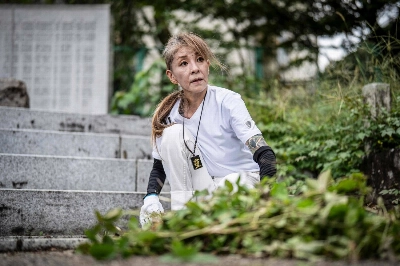The April 16 AFP-JIJI article "Japan's scientists: just 14% female" must be frustrating for the Japanese government, but nowhere near as frustrating as it is for the women trying to mark their way in a field traditionally dominated by men.
The problem in Japan, as in many other countries, is certainly not a lack of intelligent young women who have a passion for science. It's a system that does not do enough to help them enter the profession, support them in their career and help them to sustain their career over a long period.
In Australia the situation has been, to a large extent, the same as in Japan. While the percentage of women in science may be slightly higher, the frustration level among women scientists is no lower. Women at all levels of their careers, from recent grads to postdoctoral fellows, find that being a woman in science, and wanting to get married and have a family, take a terrible toll on their career. Any break from their field of studies will make their chances of returning and continuing their career pathway almost impossible, since the grants that result in funding depend on continuous research output.
To address this problem and put a halt to discrimination against women in science, there needs to be a rethink in how women can be better accommodated so that they can contribute to their field in a way that allows them to live up to their full potential. Yet, this is often easier said than done.
In Australia, two very important initiatives have been implemented to help remedy this situation. The first is the Women in Science Enquiry Network Inc. (WISENET), which was established to increase women's participation in the sciences, to link people in different branches of science and to help women transition through their career from researchers to professional scientists. It also offers networking opportunities on campuses for women either working or studying in science, mathematics or engineering.
The next important initiative involves Australia's premier science body, the Commonwealth Scientific and Industrial Research Organization, which offers women scientists a truly innovative work environment, taking into account the demands of women scientists and the need for work-life balance. It offers flexible working hours around school hours for women with children, job-sharing opportunities, facilities on site for nursing mothers, part-time work hours to suit individual needs, a reduced working year so that working mothers can be home for school holidays, and study assistance so that women can continue their careers on site or at home.
In Japan, as in Australia, there are many women who have thrown away their science careers in pure frustration at the lack of opportunities available to them. Not only is this a terrible waste of talent, but it also discourages young students who may want to enter the field.
What is needed are forward thinkers who can take into account the demands that make the work-life balance for women difficult and who are bold enough to offer a solution that allows all scientists, regardless of gender, the opportunity to contribute to the field and the national economy.
The opinions expressed in this letter to the editor are the writer's own and do not necessarily reflect the policies of The Japan Times.

















With your current subscription plan you can comment on stories. However, before writing your first comment, please create a display name in the Profile section of your subscriber account page.